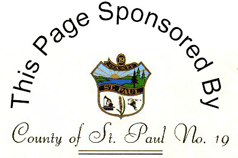Daily life in 1792
by Billie Milholland
In 1792, in Northeastern Alberta, there were few buildings, no vehicles or cultivated fields, gardens, fences, or poles. There were no trails wider than a horse unless you lived along a river or open praire where the buffalo made beautiful highway-wide paths. Only if you lived in Fort Chipewyan, Fort Fork ( about 12 miles avove the mouth of the Smoky River) or within the newly constructed Fort George or Buckingham House, south of Elk Point, would you be living in a wooden building.
Everyone else lived in an efficient skin or bark shelter. The bed was warm furs on an evergreen bough mattress, the stove, and open fire, cooking pot, an animal stomach or birch bark container. Clothing was made from tanned skins, beautifully decorated with quills, hair, feathers, bones, teeth, claws, shells and possibly glass beads.
During the coldest months people lived in a very small community with friends and relatives. Everyone kept busy hunting or fishing. Some gathered woood and moss. Others processed hides, sewed and decorated clothing and footwear. Someone made and repaired tools, weapons, fishnets and canoes.
Radio and TV hadn't been invented yet but everyone could sing, dance and tell stories, maybe even play a reed flute or skin drum. Hunting for family needs was coordinated with trapping for sxtra furs for trade in families that believed in trade with the newly arrived Europeans.
Health was important. The First People understood that water that touched the body was not for drinking, There were no showers but people made sweathouses for the health of the body and mind and would take a daily plunge in the lake, even in the winter.
Spring and summer was time for travel in large communities, time for group hunting, fishing, visiting, feasting, celebrating and making dried meat and pemmican for winter.
Even the people who lived in Fort George and Buckingham House liked to get out in spring and summer to hunt, fish, gather news and escape the smelly, smoky forts. 



